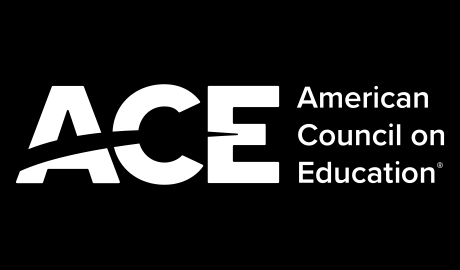Calculus I – Online Higher Education Course
Calculus I introduces students to the mathematics of change, with a focus on functions, limits, differentiation, and integration. Using real-world examples, this 100% online course develops students' advanced math skills.
A New Way to Learn Calculus
In this course, students will:
- Understand and find limits from graphs, tables, and equations
- Define and apply derivatives to solve optimization and related rates problems
- Differentiate and graph polynomial, exponential, logarithmic, and trigonometric functions
- Compute indefinite and definite integrals across key function types
- Use integrals to calculate work, distance, volume, and areas under and between curves
Gen Ed That Simply Works

Turnkey Courses
With online, asynchronous courses that are ready to run, you can deliver high-quality learning and outcomes predictably and affordably.

Curriculum You Can Trust
Every course is recommended by the American Council on Education. So you can trust the curriculum meets rigorous academic standards.

Captivating Student Experience
Students enjoy cinematic lectures from experts in the field and interactive, mastery-based learning—all in a flexible, 14-week course that fits their schedules.

Unlimited Enrollment
With no minimum or maximum enrollment, students get the courses they need when they need them, so they stay on track in their degree program.
Discover the magic of learning with Calculus I
Watch the Trailer
Build your students’ confidence in higher math
-
Key Concepts
-
Learning Outcomes
-
Assessments
-
Educator Support
-
World-Class Instructors
Key Concepts Covered
-
Functions and Limits
- Representing, modeling, and transforming functions
- Exponential, inverse, and logarithmic functions
- Tangents and instantaneous velocity
- Limits and continuity of functions
-
Differentiation
- Differentiating polynomial, exponential, logarithmic, hyperbolic, and trigonometric functions
- The product and quotient rules
- The chain rule
- Implicit differentiation
- Related rates
- Linearization and differentials
-
Applying Differentiation
- Finding maximums and minimums
- Derivative tests
- Indeterminates and L'Hôpital's Rule
- Sketching curves
- Using graphing tools
- Optimization
- Antiderivatives
-
Integration
- Approximating area and distance
- Definite and indefinite integrals
- The Fundamental Theorem of Calculus
- The substitution rule
-
Applying Integration
- Finding areas between curves
- Volume by integration
- Calculating work
- The Mean Value Theorem for Integrals
Course Learning Outcome
-
Course Learning Outcomes
- Find limits of functions presented as graphs, tables, or algebraic expressions
- Use the concept of limit to define the derivative of functions
- Differentiate functions involving polynomials, exponentials, logarithms, and trigonometric terms
- Apply the concepts of differentiation to solve optimization problems
- Apply the concepts of differentiation to solve related rates problems
- Use the derivative to draw the graphs of functions involving polynomials, exponentials, logarithms, and trigonometric terms
- Find indefinite integrals involving polynomials, exponentials, logarithms, and trigonometric functions
- Find definite integrals involving polynomials, exponentials, logarithms and trigonometric functions
- Apply the definite integral to compute work, distance, and volumes
- Find net area, area under a curve, and area between curves
Assessments
-
Quizzes and Exams
- Course quizzes and exams consist of multiple choice, true/false, select all that apply, matching, and open-response questions. All are autograded by the LMS, so educators can spend more time with students and less time grading.
Educator Support & Dashboard
-
Access All Course MaterialEducators and administrators have full access to the Partner Dashboard and all course material from Day 1.
-
View Course MilestonesEasy-to-use tools show milestone dates and deadlines for the cohort, as well as the full weekly course schedule.
-
Monitor Student Progress in Real TimeCoach students throughout the course—from registration to the final exam—with complete reporting on their current course grades, assessment scores, and engagement with course material.
-
Download Student Grades & ProgressEducators and administrators can download student grades and full progress report details in CSV format.
-
Review Student Submissions for Graded AssessmentsEducators and administrators can view student-submitted answers to assignments, quizzes, and exams.
World-Class Instructors
-
World-Class Instructors
Everyone learns differently. That’s why we selected three instructors for their distinctive approaches to teaching calculus. Students can sample lessons from each instructor and choose one that best suits their learning style—or hop between all three!
- Hannah Fry, Ph.D., University of Cambridge
- John Urschel, Ph.D., MIT
- Tim Chartier, Ph.D., Davidson College
Frequently Asked Questions About Calculus I
-
How are Outlier courses structured?
Outlier courses are divided into a series of chapters and sections. Each section contains cinematic video lectures and Active learning (our interactive digital textbook) that help students learn the course content.
In Calculus I, students can choose from three top-rated instructors to find the teaching style that best suits them. Students also get tons of practice with interactive question sets and mastery-based quizzes.
-
Are there any course prerequisites?Yes, Precalculus.
-
Are there any student eligibility requirements?
Students must be at least 13 years old. Students who enroll in an Outlier course should be ready for the academic rigor of college-level coursework and carefully consider their existing responsibilities and dedication.
-
What technology does my school need to take Outlier courses?
Each student must have access to technology that meets the technical requirements noted in this Help Center article.
-
What is the minimum/maximum enrollment?
All Outlier courses have unlimited enrollment, with no minimum or maximum. So they easily adapt to your scheduling and staffing needs.
-
What support is available for educators?
Your educators get complete visibility into student progress in the Partner Dashboard, including:
- Progress monitoring based on the course syllabus and schedule
- Grade pacing and forecasting based on students’ performance
-
Is the Calculus I course completely online?Yes, Outlier courses are 100% online and asynchronous. Your students can learn during any class period—anywhere in the universe with Wi-Fi and a laptop or desktop computer.